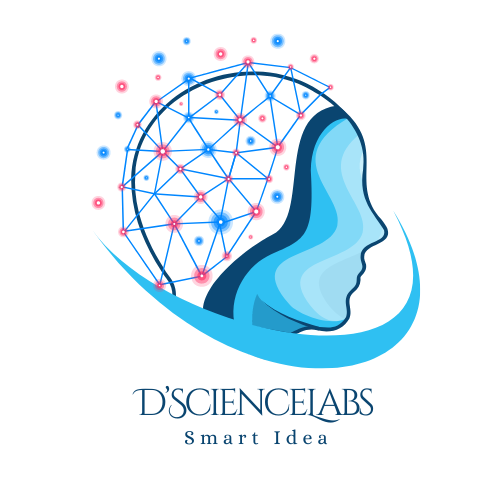Introduction
In today’s digital age, data is one of the most valuable assets for businesses, governments, and researchers. Data Science is the key to unlocking insights from vast amounts of information, driving innovation, and enhancing decision-making.
What is Data Science?
Data Science is an interdisciplinary field that combines statistics, mathematics, computer science, and domain knowledge to extract insights and meaningful patterns from structured and unstructured data. It involves techniques such as data analysis, machine learning, artificial intelligence (AI), and big data processing to support decision-making and automation.
Data Science is an interdisciplinary field that integrates:
- ✅ Statistics and Mathematics for data analysis
- ✅ Programming (Python/R) for data manipulation and automation
- ✅ Machine Learning and AI for predictive analytics and automation
- ✅ Domain Knowledge to provide meaningful context and interpretation
The Role of Domain Knowledge
While technical skills such as coding and statistical modeling are essential, domain knowledge is equally crucial. It helps in:
- ✅ Identifying relevant data sources and features for analysis
- ✅ Understanding the real-world implications of data-driven insights
- ✅ Making informed business or research decisions based on data
Key Components of Data Science
Data Science is a multi-step process that transforms raw data into valuable insights and actionable solutions. To achieve this, several key components work together, ensuring that data is collected, processed, analyzed, and utilized effectively. Below are the core components of Data Science:
- ✅ Data Collection : Gathering data from various sources (databases, APIs, sensors, web scraping).
- ✅ Data Cleaning & Preprocessing : Removing noise, handling missing values, and transforming data for analysis.
- ✅ Exploratory Data Analysis (EDA) : Identifying trends, patterns, and relationships in the data.
- ✅ Machine Learning & AI : Building predictive models and automating decision-making.
- ✅ Data Visualization : Communicating insights using charts, graphs, and dashboards.
- ✅ Big Data Processing : Managing large datasets using distributed computing (Hadoop, Spark).
- ✅ Deployment & Decision-Making : Implementing models into real-world applications.
Data Science Project Ideas
Untuk memahami dan menguasai konsep-konsep dalam Data Science, mengerjakan proyek praktis adalah cara terbaik. Dalam dokumen ini, kita akan membahas beberapa ide proyek Data Science yang dikategorikan berdasarkan tingkat kesulitan, mulai dari pemula hingga tingkat lanjut.
Here are some project list topics for “Applied of Data Science Across Industries”:
| # | Project Name | Description | Tools/Techniques |
|---|---|---|---|
| Beginner-Level Projects | |||
| 1 | Exploratory Data Analysis (EDA) on Titanic Dataset | Analyze survival rates based on passenger data. | pandas, ggplot2, dplyr |
| 2 | Movie Recommendation System | Build a recommendation system using collaborative filtering. | MovieLens, recommenderlab |
| 3 | Stock Market Analysis | Perform trend analysis on historical stock data. | ggplot2, matplotlib, pandas |
| 4 | Sentiment Analysis on Twitter Data | Classify tweets as positive, negative, or neutral using NLP. | rtweet, tidytext |
| 5 | Fake News Detection | Develop a Machine Learning model to differentiate fake news. | TF-IDF, Naïve Bayes |
| Intermediate-Level Projects | |||
| 6 | Customer Segmentation using Clustering | Group customers based on shopping behavior using K-Means or DBSCAN. | cluster, sklearn |
| 7 | Churn Prediction Model | Predict whether a customer will stop using a service. | Random Forest, XGBoost |
| 8 | Time Series Forecasting on Sales Data | Predict future sales using time-series models. | ARIMA, Prophet, LSTM |
| 9 | Credit Card Fraud Detection | Build a classification model to detect fraudulent transactions. | scikit-learn, XGBoost |
| 10 | Chatbot using NLP | Create an AI chatbot for conversations. | spaCy, NLTK, BERT |
| Advanced-Level Projects | |||
| 11 | Autonomous Vehicle Lane Detection | Use Computer Vision and OpenCV to detect road lanes. | OpenCV, Deep Learning |
| 12 | AI-Powered Resume Parser | Build an NLP model to extract key information from resumes. | spaCy, TensorFlow |
| 13 | Image Caption Generator | Generate automatic image descriptions using CNN + LSTM. | TensorFlow, PyTorch |
| 14 | Speech Emotion Recognition | Analyze voice data and classify emotions. | Librosa, Deep Learning |
| 15 | Medical Diagnosis with Deep Learning | Detect diseases in medical images (e.g., X-rays). | CNN, Keras, PyTorch |
| 16 | Real-Time Object Detection using YOLO | Develop an object detection system for real-time applications. | YOLO, OpenCV, Deep Learning |
Why Learn Data Science Programming?
Programming is the foundation of Data Science, enabling professionals to:
- ✅ Process and clean raw data efficiently
- ✅ Perform exploratory data analysis (EDA) to uncover trends and patterns
- ✅ Build machine learning models to make accurate predictions
- ✅ Create compelling data visualizations for effective storytelling
The two most widely used programming languages in Data Science are Python and R, each with distinct advantages.
Python vs R for Data Science
Python and R are the two most popular programming languages for Data Science and Analytics. Both have strong libraries, statistical tools, and machine learning capabilities, but they excel in different areas. The following video is a detailed comparison to help determine the best choice based on use cases.
| Aspect | Python | R |
|---|---|---|
| Ease of Learning | Intuitive, beginner-friendly | More specialized, statistical focus |
| Primary Use Cases | AI, Machine Learning, Web Development | Statistical computing, data visualization |
| Key Libraries | pandas, numpy, matplotlib, seaborn, plotly,scikit-learn |
tidyverse, dplyr, ggplot2, plotly, caret |
| Performance | Optimized for large-scale computation | Designed for in-depth statistical analysis |
| Community Support | Industry-wide adoption | Preferred in academia & research |
Key Takeaways:
- 📌 Python is ideal for AI, Machine Learning, and large-scale data analysis.
- 📌 R excels in statistical analysis and data visualization.
- 📌 Both rogramming languages have their unique strengths, and mastering both can be highly beneficial.
